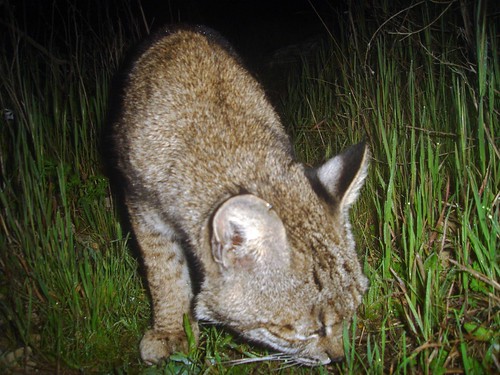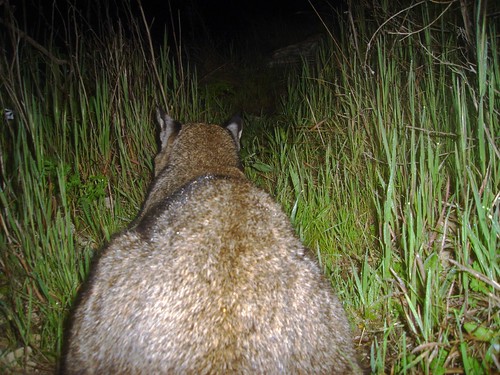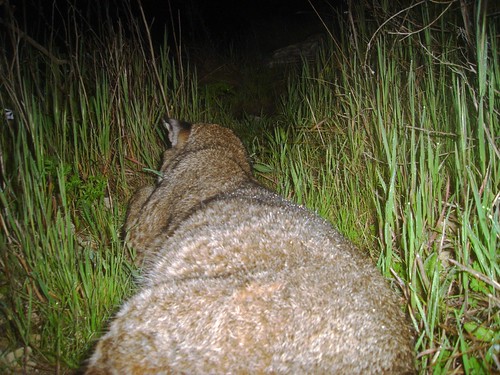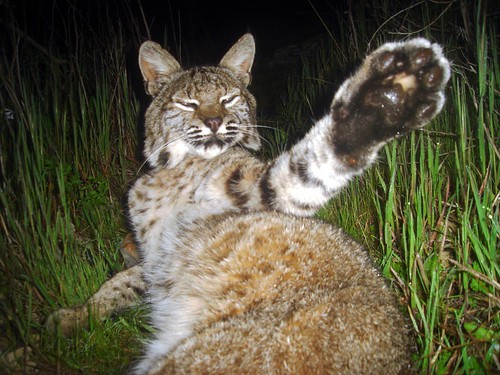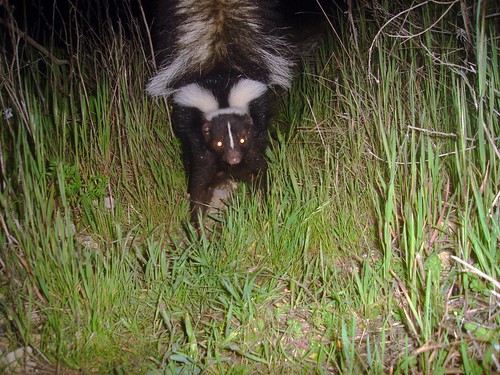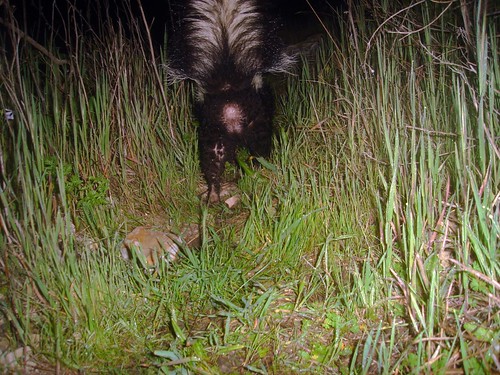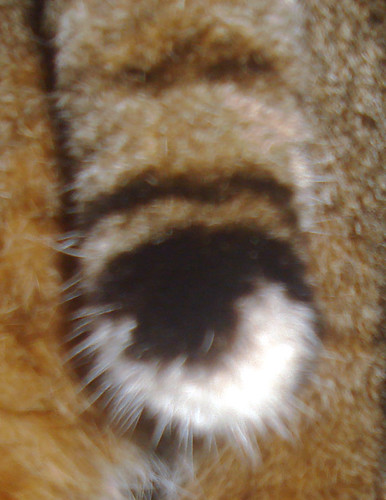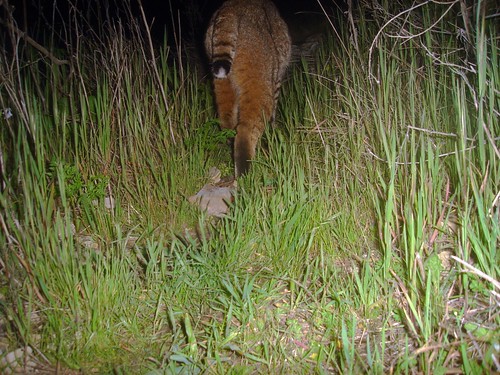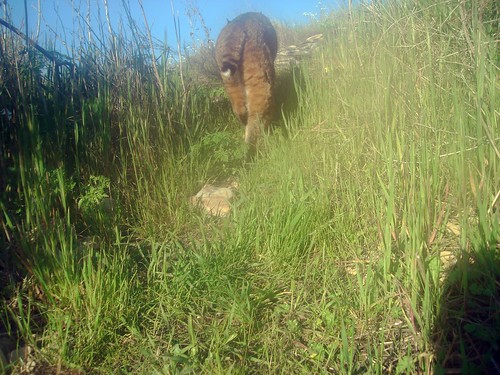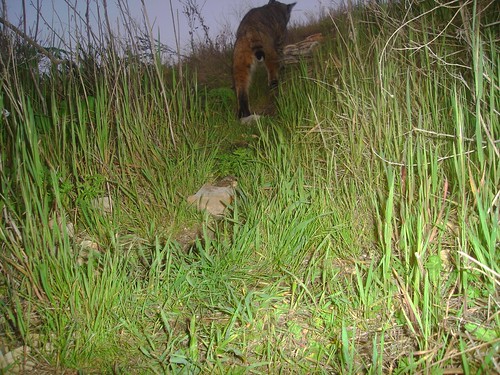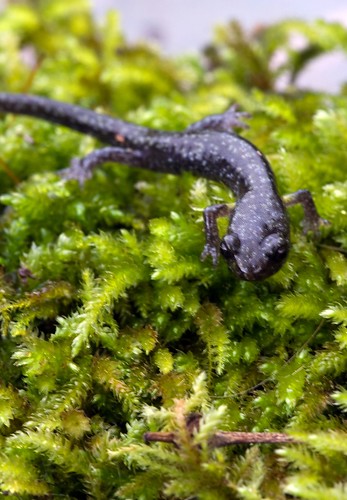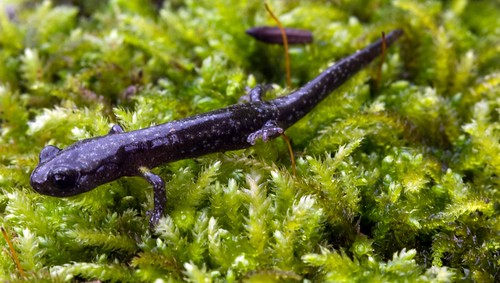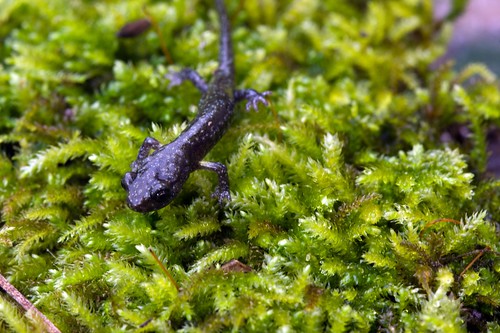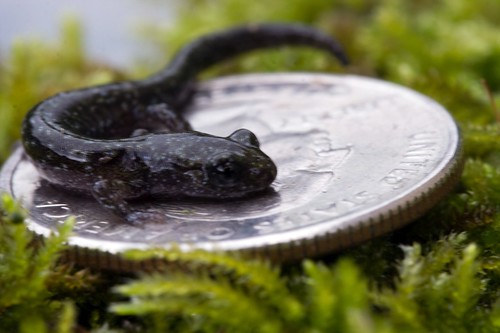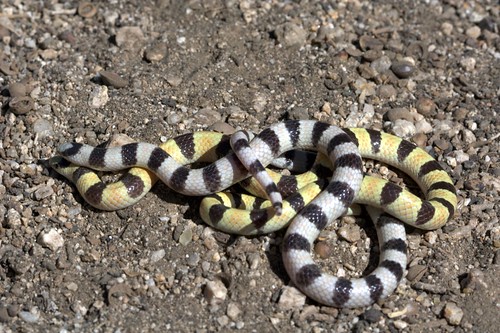
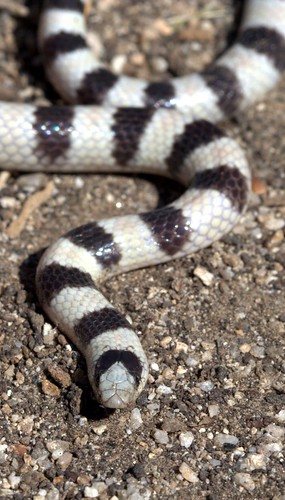
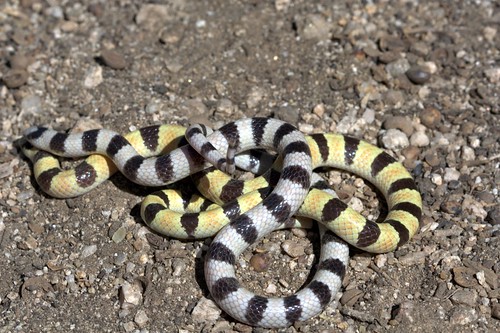
Here are two different Mohave Shovel-nosed snakes, Chionactis occipitalis occipitalis, with two very different color patterns. This is the first white shovel-nosed snake I have seen. Okay so it was the first yellow one I have seen too. This was a lifer species for me in 2011. That being said this was the first time others on the trip had seen a white banded shovel-nose too despite seeing dozens of yellows. They are much less common than the yellow guys.
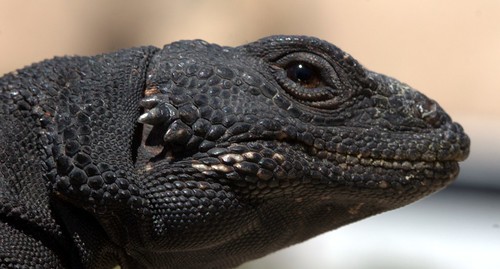
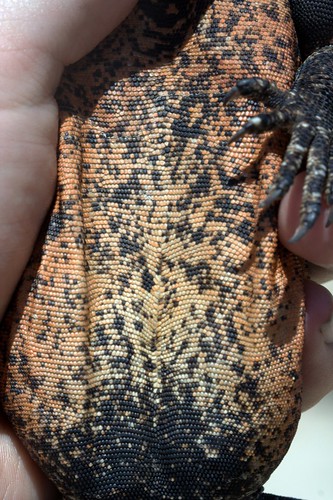
A plant eating dinosaur in hand. Common Chuckwalla, Sauromalus ater. Not a very pretty individual. When let go, he dove back into his rock crack but was back a few minutes later standing tall looking out for invading males.
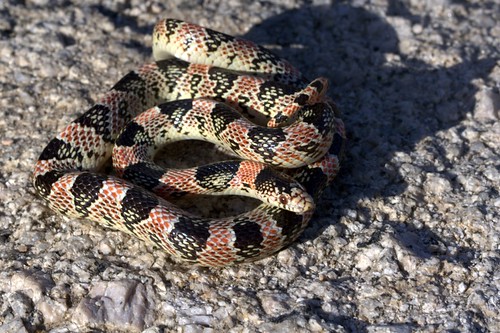
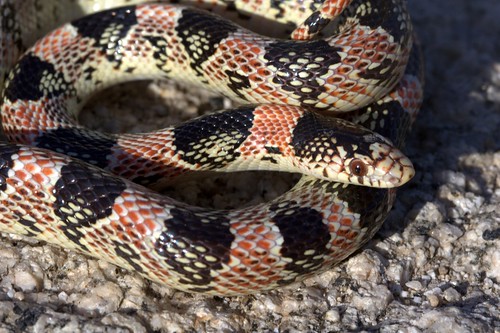
Lastly a Long-nosed Snake, Rhinocheilus lecontei. This was the most common snake we found outside of Sidewinders. Turned up half a dozen or so Rhinocheilus. The lighting wasn't great for these images but I kind of like the long shadows.
One last desert post coming up that lacks animals but has some of that good ol' desert weirdness.

